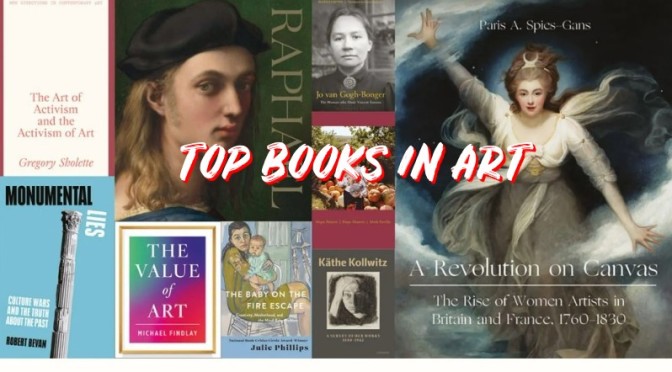
The New York Times Books (December 14, 2023): Best Art Books of 2023 – The art critics of The Times select their favorites, from Botticelli to Vermeer, Lucy Lippard’s memoir, and Wade Guyton’s intelligent rereading of Manet.
Jason Farago
‘Botticelli Drawings’ By Furio Rinaldi (Fine Arts Museums of San Francisco/Yale).

His strawberry-blond Venus on a wind-propelled scallop shell still pulls Florence’s tourists from the gelateria to the Uffizi — but a rarer Botticelli feast is currently on offer in San Francisco, where the Legion of Honor is presenting the first exhibition ever of this Renaissance master’s fragile drawings (through Feb. 11). In this authoritative catalog, Rinaldi makes several new attributions, including two exquisite head studies of a man gazing upward and a woman with modestly lowered eyes. For a Florentine in the later 15th century, the core of painting was disegno (“design,” but also “drawing”), and Botticelli put drawing first. Delicate highlights of white and yellow show the light on tensed muscles or bowed heads. Effortless squiggles cohere into Simonetta Vespucci’s curled hair or John the Baptist’s camel cloak. His line feels spring-loaded; his saints and angels seem ready for the dance floor; his paintings’ grace and vigor started with a pen.
‘Abraham Ángel: Between Wonder and Seduction’ Edited by Mark A. Castro (Dallas Museum of Art; distributed by Yale University Press).

Like Vermeer, the Mexican portraitist Abraham Ángel, who died at age 19 in 1924, left little behind. His 20 extant works (on view in Dallas through next January) reproduce beautifully in a slim but convincing catalog that doesn’t overstate the case. Ángel’s preferred substrate was cardboard, and the bumpy nap of it really shows in these pages. So do the Fauve-like colors he used to outline his sitters. (Instead of black he preferred blues and browns, as Alice Neel would.) Playfully primitive, these knowing likenesses (among them Ángel’s tutor and lover, Manuel Rodríguez Lozano) combined Mexico’s burgeoning populist aesthetic with a private romanticism that seems nonetheless to have sought clarity on the promise of his country’s Revolution.
Holland Cotter
‘Woven Histories: Textiles and Modern Abstraction’ Edited by Lynne Cooke (University of Chicago Press).

This major looker of an exhibition catalog loosens up the warp and weft of conventional views of modern art — all those tight-knotted hierarchical categories (high versus low, art versus craft) on which our institutions and markets still rest — and demonstrates the universe of formal and conceptual brilliance that has always traveled on a parallel track. The sheer variety of work produced by more than 50 artists chosen by the book’s editor, Lynne Cooke, will knock your socks off. (Just wait till you see what’s happening in the field of basketry alone.) So will the visual imaginations of individual geniuses we already know like Anni Albers, Ruth Asawa, Gego, Lenore Tawney and Sheila Hicks, and the others we’re introduced to here.

